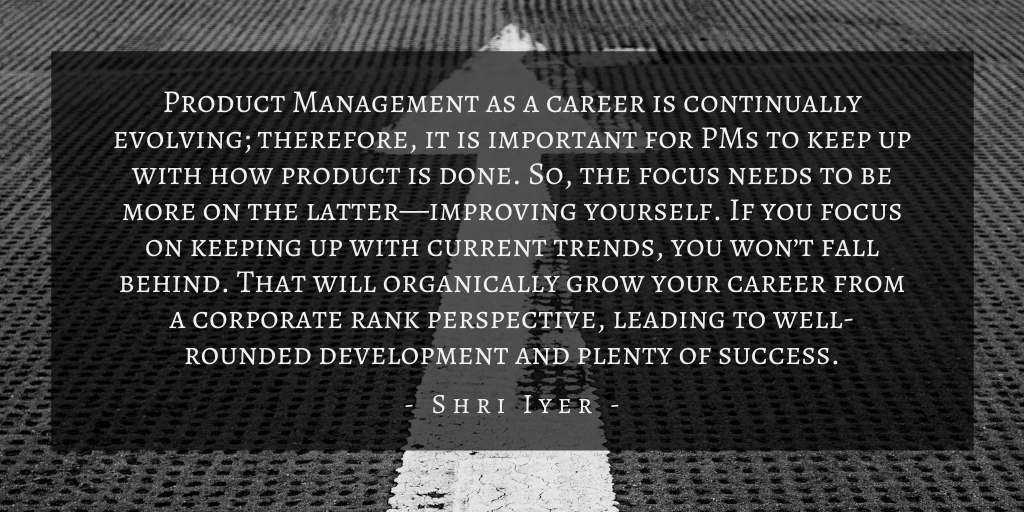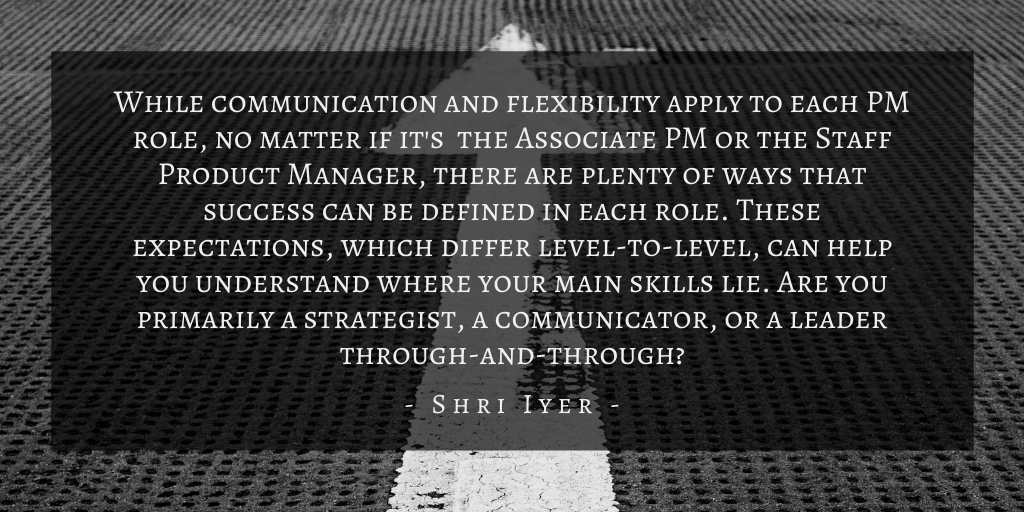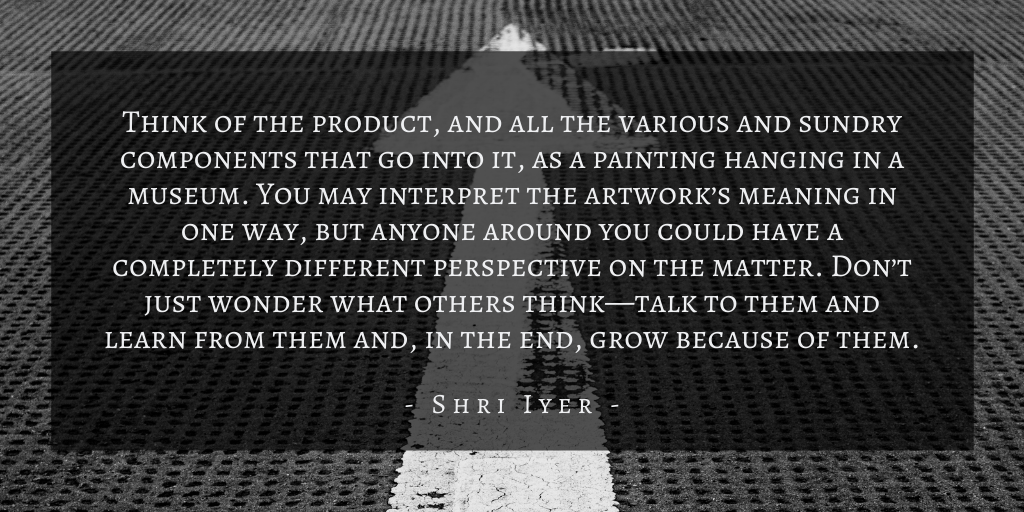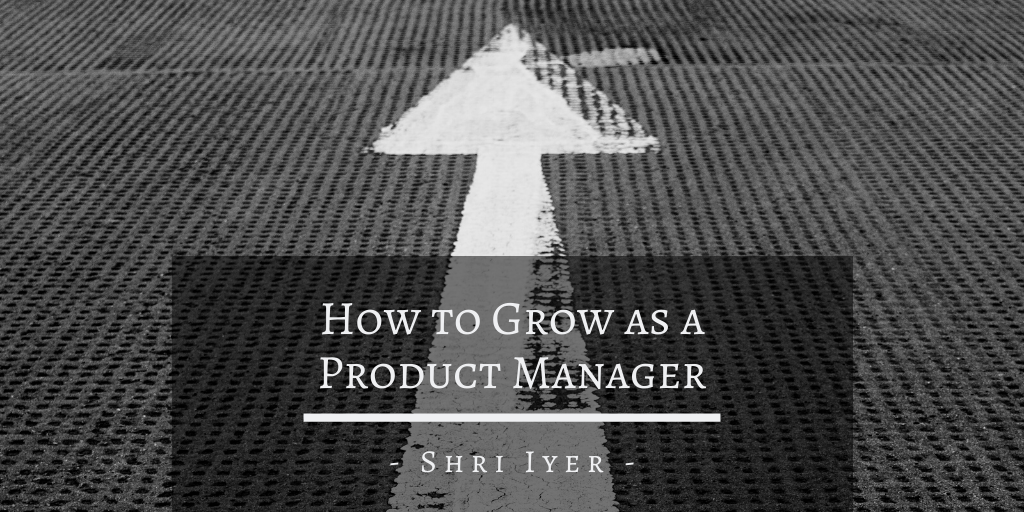Modern business is infamously fast-paced, and with all of the constant innovation and forward trajectories of work, tools, processes, and technology, it seems like there’s no time to keep up with professional development. Even when fields have straightforward career paths or easy-to-forecast futures, professionals might forget to actually try and move from one position to another. This is especially true for Product Managers, who must deal with changes not only to a product or business itself, but to overarching industries. Such an overwhelming set of principles can make even the clear-cut path of the product sphere difficult to maneuver.
However, don’t let this path make the PM role seem limiting; PMs can enjoy incredibly flexible growth, not having to limit themselves to one position, company, or industry. Taking charge of this future, then, is a necessity for Product Managers. No matter if you’re new to the world of products or a seasoned professional, you should take stock of the ways in which you can learn and grow.
Keep Up With the Times
Just because you may know where you want to end up as a PM, that does not mean that growing in rank is the only way you can grow. Growth is a two-fold process, dependent on development of rank and development of the professional self. Product Management as a career is continually evolving; therefore, it is important for PMs to keep up with how product is done. So, the focus needs to be more on the latter—improving yourself. If you focus on keeping up with current trends, you won’t fall behind. That will organically grow your career from a corporate rank perspective, leading to well-rounded development and plenty of success.

One of the personal pain points I have found is the prevalence of information about product developments, industries, and the like. At times, it can be overwhelming to encounter this ocean of data, and PMs may not know where to go or how much to consume. Personally, I follow some PM gurus, occasionally skim read some new product management books, have bookmarked a select few blogs, and keep up with technological advancements, particularly emerging tech in the product sphere.
Another option is to join a webinar or take a class; though these can cost money to attend, it is helpful to sit in on an event focused around a topic in which I’m well-versed. Even if the webinar or class covers the bare bones of that topic, it’s helpful to learn if anything new is going on in the space that I can implement in the future.
Finally, I also enjoy attending industry or product-specific conferences. At events such as Mind the Product, I’ve networked with countless passionate PMs whose unique perspectives on the world of product have shaped my own behaviors.
Understand Types of Product Management Positions

In an article for Product School, business writer Gabriela Araujo drew from Etsy PM Kevin Gu’s advice on climbing the ladder as a PM. Each level, Araujo writes, comes with its own smattering of challenges. From the lack of expertise as an Associate PM to the stress of horizontal collaboration as a Staff Product Manager, each major role type for PMs requires a specific skill set. While communication and flexibility apply to each role, there are plenty of ways that success can be defined in each role. These expectations, which differ level-to-level, can help you understand where your main skills lie. Are you primarily a strategist, a communicator, or a leader through-and-through?
Create a Professional Development Roadmap
Product Manager HQ writer Clement Kao makes an interesting comparison when he describes Product Managers as products in their own right; in that sense, he says, PMs should create roadmaps for their professional goals, including points A and B and the pathway between them.
To create the roadmap, Clement Kao suggests looking at what skills you possess (the “Initial State”) and what professional endpoint you see yourself working towards (the “End State”). The roadmap proper would be the winding path connecting those two states. Drawing from your own skills at creating roadmaps, craft one that allows for sustainable development over the long-term, and be sure to mark all the different stops along the way!
Work Towards Long-Term Success
Rome wasn’t built in a day, nor was a successful Product Manager. As Product Manager Leonid Levi posits, the PM career arc can take up to a decade to reach fruition. While short-term success can be enriching in its own right, true value comes from a lifetime of experiences—from both wins and losses. In a Quora post, Leonid Levi recommends refining various skill sets over a long period of time, including:
- Itty-bitty pieces of details
- Working with the users
- Ideation
- Focus
- Vision, and
- Strategic thinking
Each of these skills, he writes, paves the way for success in a position that, for some PMs, is the end-goal—the Vice President of Product Management, Chief Product Officer (CPO) or General Manager.
Of course, not every PM seeks out these leadership positions. The important thing to remember is that, while there are six common roles in the general Product Management career path, they can transfer across industries and between vastly different companies. Each of these positions, however, requires the aforementioned soft skills that Leonid Levi highlighted, which is why it’s important to build them up over time and grow comfortable in your own PM skin.
Learn, Learn, Learn
Joanna Beltowska puts it best when she writes, “If you’re not actively honing your craft, you’re falling behind.” In her Medium article about accelerating PM growth, she recommends turning into a sponge and absorbing every experience you can. That’s not to say that PMs should be passive, though; rather, a PM working towards success should actively search for opportunities to learn. Beltowska recommends professional mentors within the industry or who hold positions you aspire for, books about personal development and Product Management, and networking events and conferences both in your area and online.

It’s a matter, therefore, of gaining not just experience, but perspective as well. Think of the product, and all the various and sundry components that go into it, as a painting hanging in a museum. You may interpret the artwork’s meaning in one way, but anyone around you could have a completely different perspective on the matter. Don’t just wonder what others think—talk to them and learn from them and, in the end, grow because of them.
It can be difficult to keep up with the times and understand the intricacies of products and Product Management. After all, everyone’s learning style is different. What matters is that we understand ourselves and how we learn; from there, we can work towards top PM positions and push our professional selves and our industry onwards and upwards!

